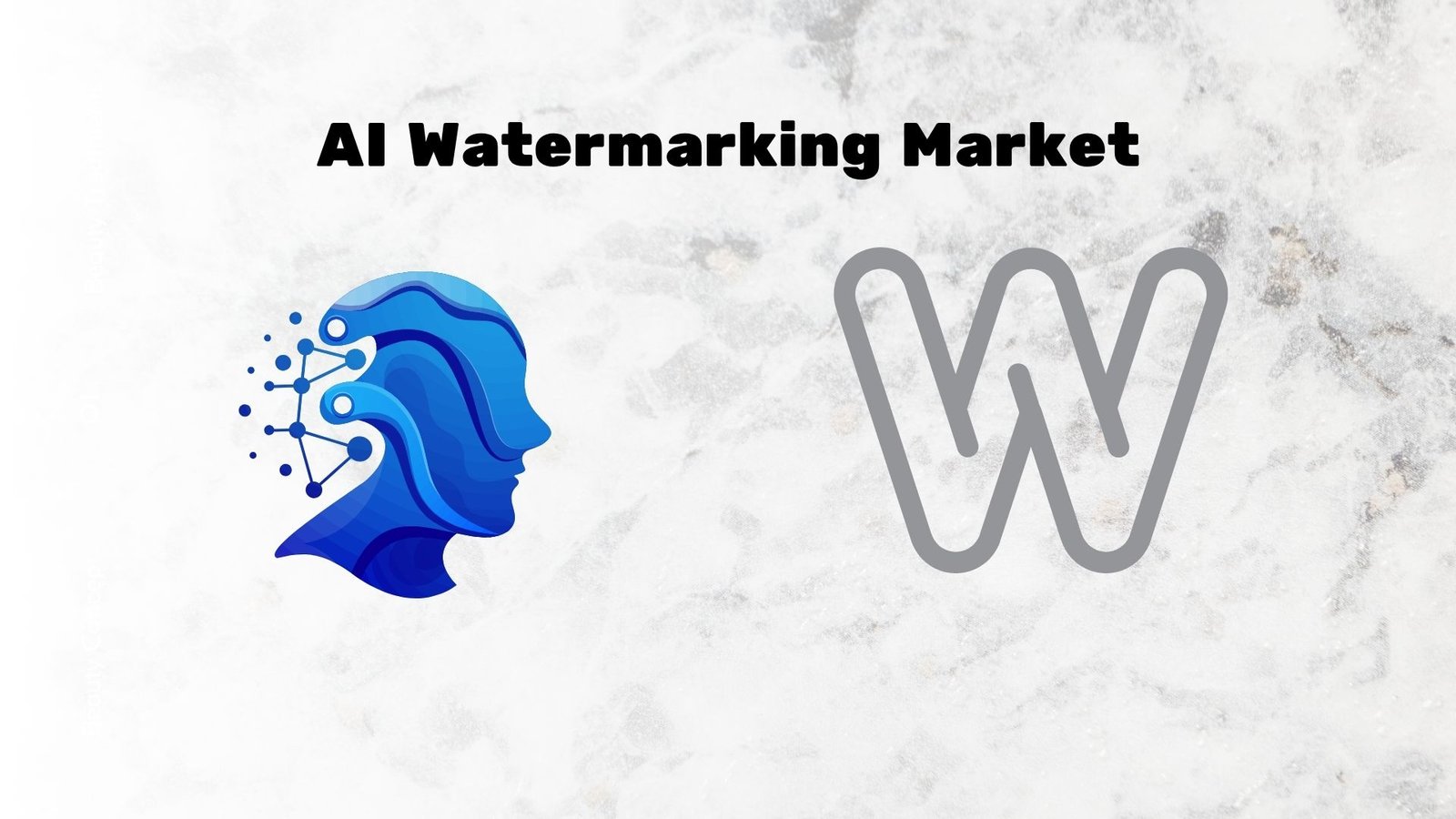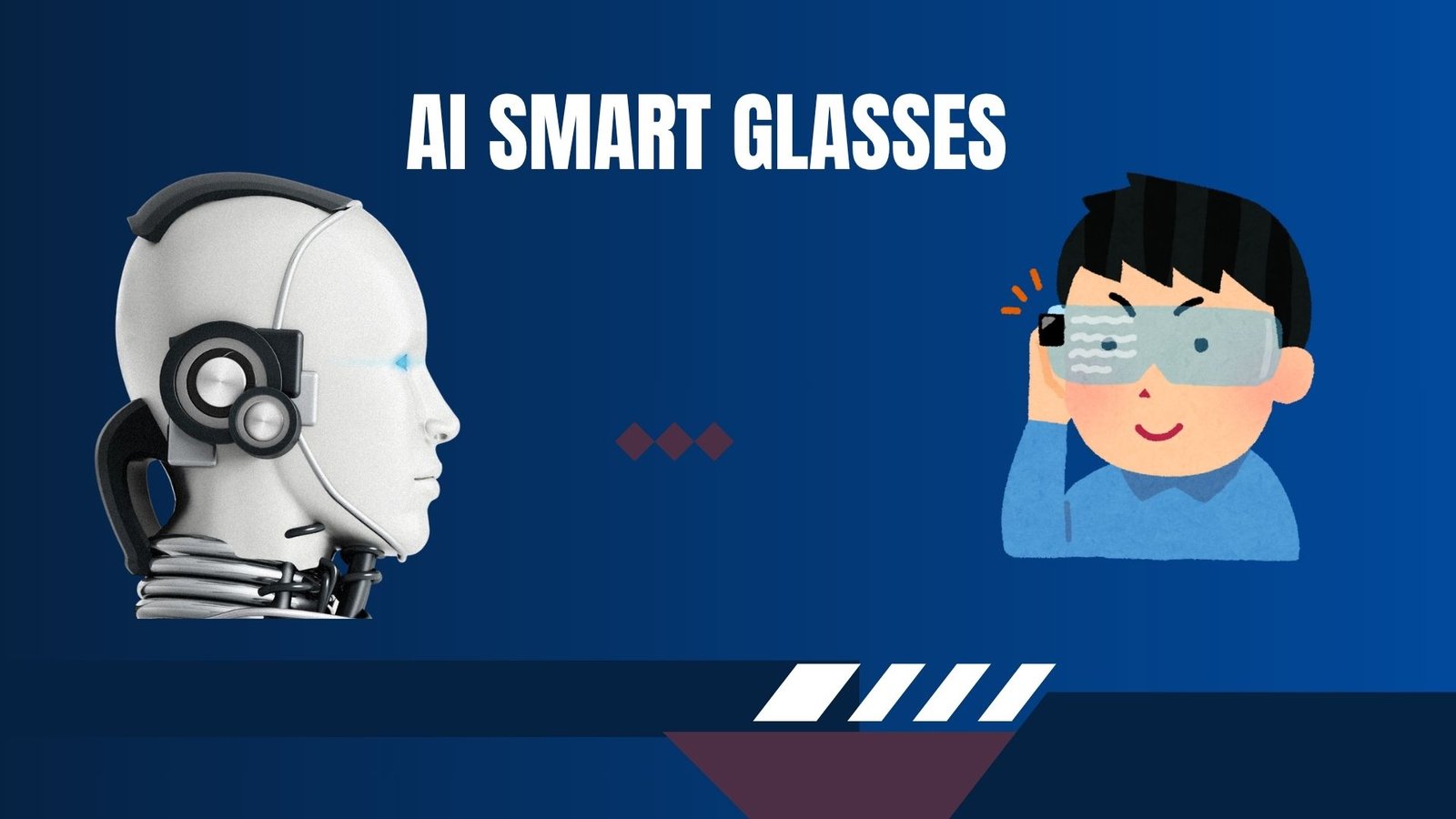AI Education Tools market Expected to USD 223.2 bn by 2034
Updated · Oct 08, 2025
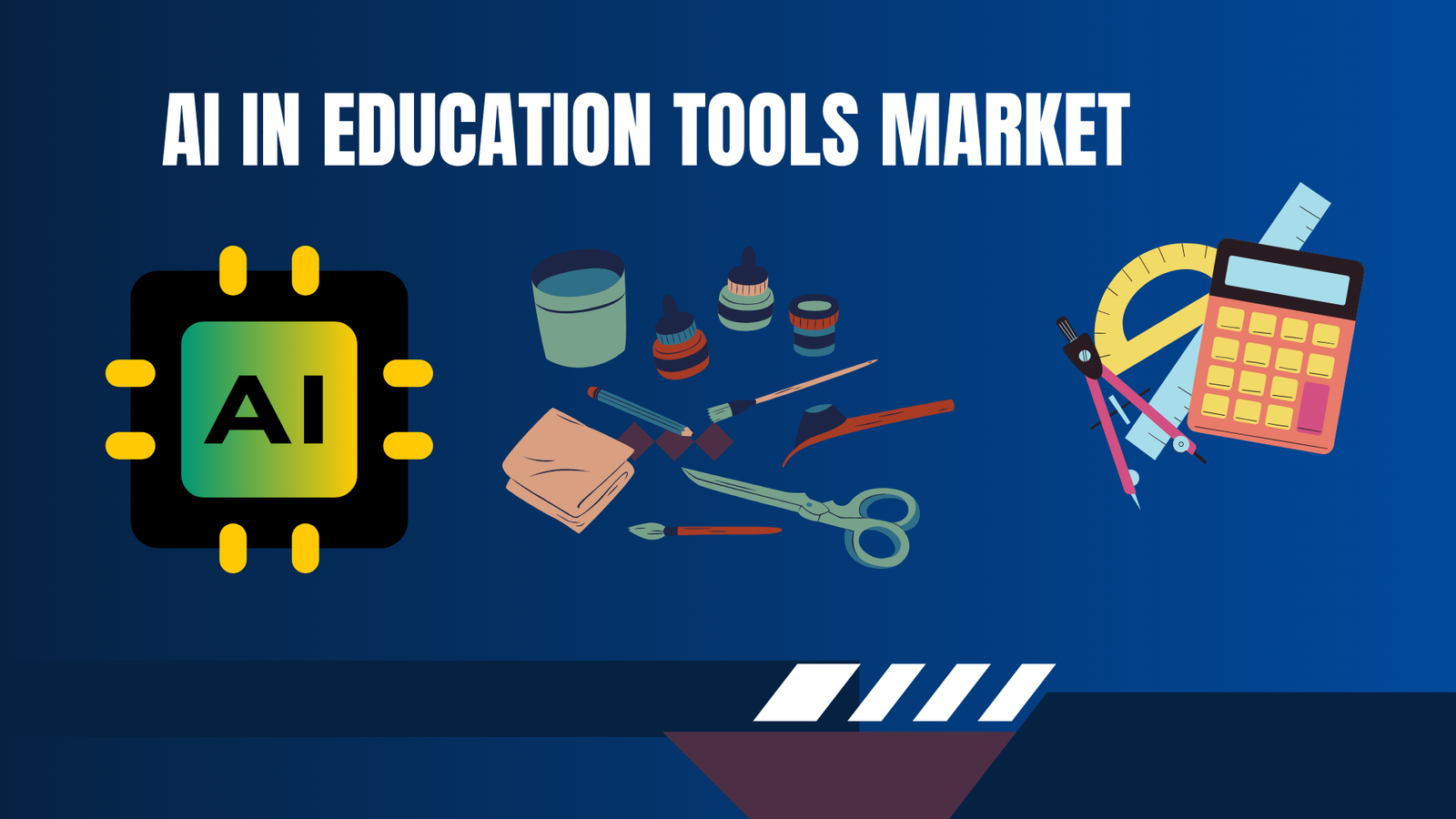
WHAT WE HAVE ON THIS PAGE
Introduction
The global AI Education Tools market earned USD 7.5 billion in 2024 and is expected to grow significantly, reaching USD 10.5 billion in 2025 and expanding to approximately USD 223.2 billion by 2034. This growth represents a compound annual growth rate (CAGR) of 40.4% during the forecast period. In 2024, North America led the market with a dominant share of over 36.4%, generating revenue of USD 2.7 billion.
The AI in Education market is rapidly evolving as artificial intelligence technologies transform traditional learning environments into more personalized, adaptive, and efficient systems. AI facilitates customized educational experiences by analyzing individual student behaviors, learning styles, and performance data to tailor content and pacing.
This personalized approach enhances engagement and comprehension, making education accessible and effective for diverse learners. The growing use of AI-powered virtual tutors and intelligent tutoring systems is also reshaping how students learn, offering real-time feedback and enabling self-paced study, which supports improved academic outcomes and broader inclusion.
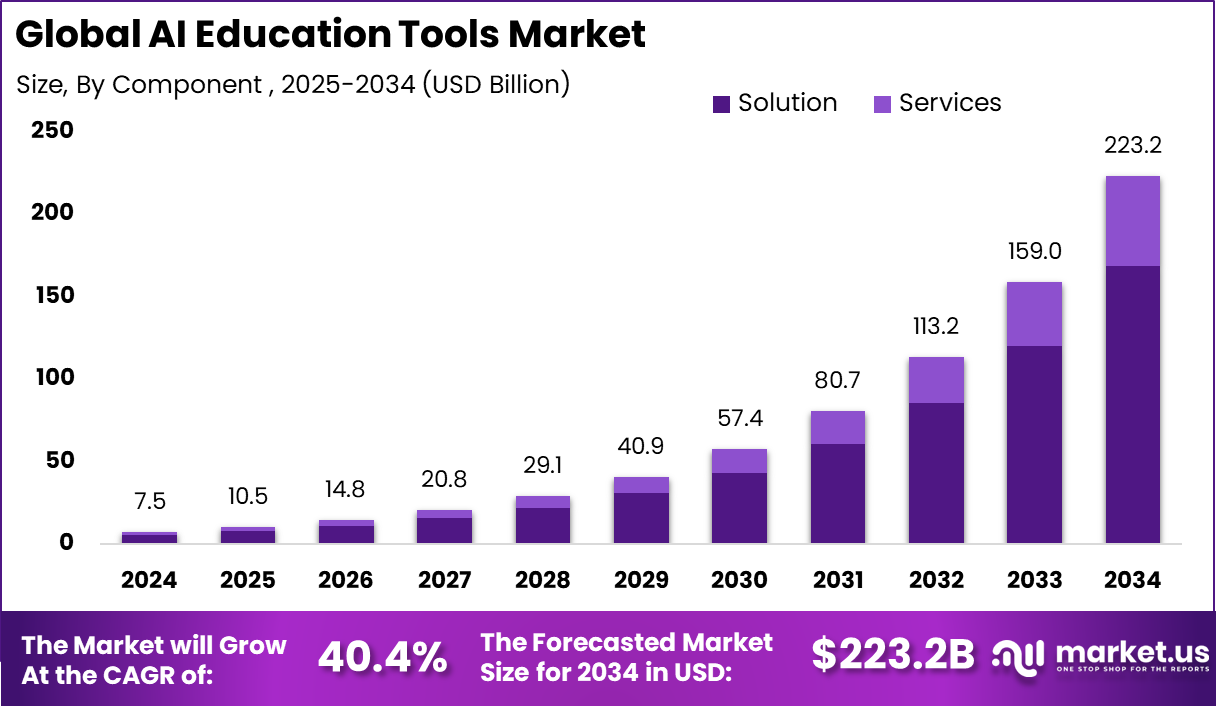
Key Insight Summary
- The solutions segment dominates with 75.54%, reflecting strong demand for ready-to-use AI-powered learning platforms.
- Cloud deployment holds 64.7%, highlighting its scalability, flexibility, and accessibility for both institutions and learners.
- Natural Language Processing (NLP) leads with 42.6%, enabling adaptive learning, chatbots, and intelligent content delivery.
- Learning platforms and virtual facilitators account for 46.72%, showing broad adoption of interactive and personalized learning tools.
- Higher education leads with 46.84%, as universities deploy AI to enhance research and teaching outcomes.
- North America captures 36.4%, driven by strong EdTech ecosystems, policy support, and institutional investments.
- The US market reached USD 2.36 billion and is advancing at a rapid CAGR of 36.7%, reinforcing its position as a global leader in AI-driven education solutions.
Top driving factors fueling this market include the sharp increase in demand for personalized learning experiences and the widespread shift to digital and remote education platforms. AI helps automate administrative processes such as grading, attendance, and lesson planning, significantly reducing educators’ workloads by up to 44%, allowing them to devote more time to direct student interaction.
Additionally, continuous advances in AI algorithms and data availability enable more scalable, efficient educational solutions across K-12, higher education, and corporate training sectors. Government policies promoting AI adoption in education and the expansion of digital infrastructure further support this growth.
Analysts’ Viewpoint
Demand analysis reveals that both educators and learners increasingly seek AI capabilities for personalized content delivery, adaptive assessments, and instant feedback, which improve learning efficiency. Teachers report higher satisfaction with AI tools that assist in research, lesson planning, and material generation. Moreover, students widely use AI, with around 89% admitting to leveraging AI tools like ChatGPT for academic tasks. This adoption is driven by the simplicity and accessibility of AI platforms that empower learners to enhance their study practices independently.
Increasingly adopted AI technologies in education include intelligent tutoring systems, automated grading software, adaptive learning platforms, and AI-driven analytics tools. These technologies provide highly tailored support, from identifying students’ cognitive gaps to offering personalized practice materials. Virtual tutors, available 24/7, help students who require additional assistance. Data-driven insights allow educators to refine teaching strategies and intervene promptly where students struggle, contributing to improved educational outcomes and retention rates. These technologies also enhance inclusion by supporting students with varying needs through voice recognition and accessibility tools.
The key reasons for adopting AI in educational settings revolve around enhancing teaching effectiveness, improving student engagement, and making learning more flexible and accessible. AI’s ability to provide personalized learning experiences aligns with the increasing recognition that one-size-fits-all education fails to address diverse learner requirements. Additionally, automation of routine tasks reduces operational costs and addresses teacher burnout. Real-time feedback and continuous assessment help students correct errors quickly, accelerating skill acquisition and knowledge retention.
Investment and Business benefits
Investment opportunities within the AI in Education market are expanding as educational institutions and EdTech companies seek innovative AI-driven solutions. The market offers potential for investors focused on scalable platforms that cater to personalized learning, AI-powered assessments, and immersive learning experiences using augmented and virtual reality. Growth prospects also arise from the rising demand for lifelong learning programs and corporate training powered by AI. Technology firms that can build sustainable, data-driven products and collaborate with educational institutions are especially well-positioned to benefit from this wave of AI adoption.
Business benefits from AI integration in education include enhanced operational efficiency, improved educational quality, and increased accessibility. AI reduces the burden of administrative tasks by automating grading and attendance tracking, which can save up to 44% of teachers’ time. Personalized learning increases student motivation and performance, with data showing students can score around 54% higher on tests with AI support. Institutions benefit from data-driven decision-making that optimizes resource allocation and helps identify at-risk students for timely intervention. AI also raises academic standards by ensuring consistency and fairness in evaluation, fostering a more inclusive and adaptive educational environment.
US Market Size
The U.S. AI Education Tools Market was valued at USD 2.4 Billion in 2024 and is anticipated to reach approximately USD 53.8 Billion by 2034, expanding at a compound annual growth rate (CAGR) of 26.7% during the forecast period from 2025 to 2034.
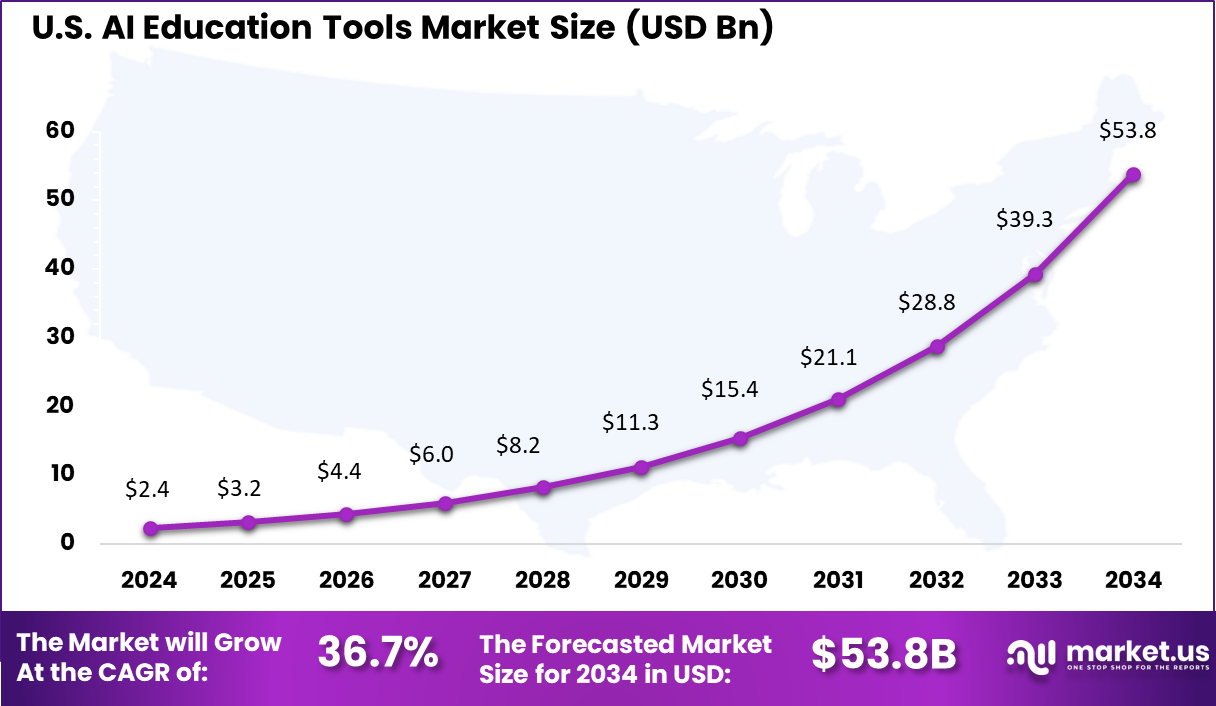
In 2024, North America held a dominant market position, capturing more than a 36.4% share and generating USD 2.7 billion in revenue. The region’s leadership can be attributed to rapid adoption of AI-driven learning platforms across schools, universities, and corporate training ecosystems.
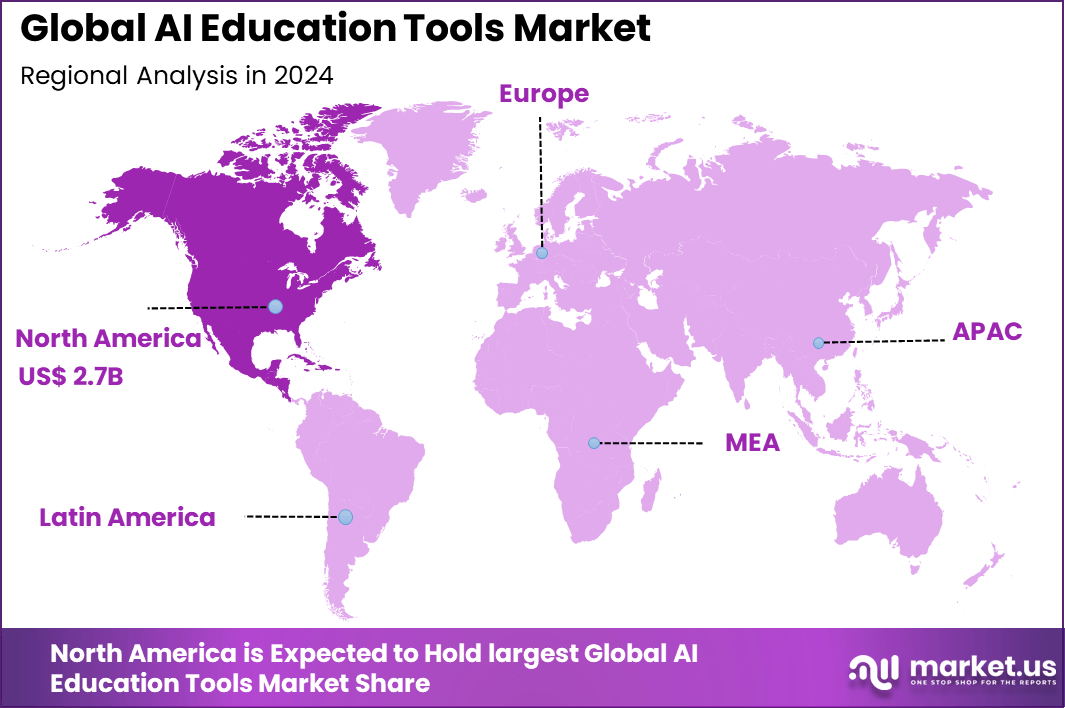
The regulatory environment surrounding AI in education is tightening to address ethical and privacy concerns. Strong regulations are being developed to ensure data protection, promote fair use of AI, mitigate algorithmic bias, and maintain academic integrity. Countries like India have allocated significant funds to establish AI centers of excellence, encouraging ethical AI adoption aligned with educational goals. Recommendations emphasize transparency in AI decision-making and regular audits of AI systems, supported by ongoing educator training. These frameworks help balance innovation with ethical standards, fostering trust and safeguarding student rights as AI tools become integral to education.
Top impacting factors affecting the AI education market include technological advances, government policies, market adoption rates, and evolving educational needs. Rapid developments in AI algorithms and the increased availability of big data drive continuous innovation in educational tools. Government support through funding and policy frameworks boosts adoption, especially in regions with robust digital infrastructure. Growing demand for personalized learning and remote education solutions creates market momentum. Meanwhile, challenges like regulatory compliance, ethical considerations, and teacher preparedness influence the pace and scope of AI integration in educational institutions.
Key Market Segments
By Component
- Solutions
- Services
By Deployment
- Cloud
- On-Premises
By Technology
- Natural Language Processing (NLP)
- Machine Learning
- Computer Vision
- Others
By Application
- Learning Platform & Virtual Facilitators
- Intelligent Tutoring System (ITS)
- Smart Content
- Fraud and Risk Management
- Others
By End-use
- K-12 Education
- Higher Education
- Corporate Training & Learning
Top Key Players in the Market
- Amazon Web Services, Inc.
- IBM Corporation
- Microsoft
- Google LLC
- Pearson
- BridgeU
- DreamBox Learning, Inc.
- Carnegie Learning, Inc.
- Fishtree Inc.
- Anthology Inc.
- Others
In summary, AI in education is transforming how learning is delivered and managed, underpinned by strong demand for personalization, technological innovation, and supportive policy environments. This evolution promises significant benefits for students, educators, and institutions by enhancing engagement, efficiency, and outcomes while presenting compelling opportunities for investment and growth.
Source of information @ https://market.us/report/ai-education-tools-market/

Barry loves technology and enjoys researching different tech topics in detail. He collects important statistics and facts to help others. Barry is especially interested in understanding software and writing content that shows its benefits. In his free time, he likes to try out new healthy recipes, practice yoga, meditate, or take nature walks with his child.


